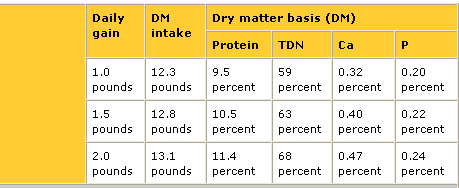



Managing Mother's Milk-Colostrum
By Lori Weddle-Schott Bethany Lovaas, DVM University of Minnesota Beef Team - Getting a calf off to a good start by ensuring colostrum intake is one of the most important steps for overall calf health.Calves are born "agammaglobulinemic", which means they have no antibodies in circulation when they're born. Colostrum is their only protection from disease until their own immune system develops the ability to respond to disease challenge.
In general high quality colostrum is thick, syrupy, and yellow to tan in color. Colostrum, often referred to as "first milk", is more than milk. The makeup of colostrum is more similar to blood than milk. Being very high in immunoglobulins (antibodies) that assist in preventing infections, colostrum content is high in energy, fat, vitamins A and D, white blood cells and factors that influence growth. Colostrum antibodies only last for a few months, but are crucial to getting the calf off to a good start.
The timing in which a newborn calf receives colostrum is very important. The timing of colostrum intake, amount fed, and antibody concentration of the colostrum determines the success of absorption of antibodies by the calf.
Calves are born with a finite number of receptors that are capable of absorbing antibodies into circulation. These receptors have a limited lifespan, and are not replaced with normal cellular turnover in the gut. Research states that within 24-hours after birth, the gut begins to "close," which means it becomes increasingly difficult for the calf to absorb the antibodies in the colostrum, and eventually, the calf's intestine becomes impermeable to the large proteins.
Studies have supported that at six hours after birth, calves absorbed 66 % of the immunoglobulins in colostrum, but at 36 hours after birth calves were able to absorb only 7 % of immunoglobulins. Colostrum contains approximately 22 % solids, compared to 12 % solids in normal whole cow's milk.
Purdue University offers the following guidelines for refrigeration, freezing and thawing of colostrum.

Colostrum Refrigeration
Colostrum can be refrigerated for only about 1 week before quality declines. If you refrigerate colostrum, be sure that the refrigerator is cold (33-35 degree F) to reduce the onset of bacterial growth. If the colostrum begins to show signs of souring, quality is reduced. The IgG molecules in colostrum that convey passive immunity to the newborn will be degraded by the bacteria, reducing the amount of immunity provided. Thus, it is important that colostrum be stored in the refrigerator for only a short time.Freezing Colostrum
Having a good quantity of frozen colostrum on for emergency situations should be evaluated before calving season begins. The problem is: how do you obtain this colostrum? Many producers obtain colostrum from another farm, but producer should be aware that of the risk of obtaining a from another location. Diseases like Johne's disease and salmonella can be transmitted via colostrum and can be a disaster for your herd. Most veterinarians recommend you never use colostrum from another farm. The best ways to obtain colostrum are to: (1) milk out any cow or heifer that loses her calf for non-disease reasons in your herd or (2) take a small amount of colostrum (less than 500 ml) from numerous cows that have a more than adequate supply of colostrum for their calves, which can be labor intensive but worth the investment. Colostrum may be frozen for up to a year without significant decomposition of Ig. Research has reported that frost-free freezers are not optimal for long-term colostrum storage. These types of refrigerators go through freeze-thaw cycles that can allow the colostrum to thaw, which in turn can shorten the storage life of colostrum Some ideas for freezing colostrum is to utilize ice cube trays or small plastic bags so that fast and easy thawing can occur. Also, freezing colostrum in 1 or 2 liter bottles or 1 quart (liter) in 1 or 2 gallon zip-closure bags is an ideal method of storage. Use two bags to minimize chance of leaking, and lay them flat in the freezer. By laying the bags flat, rate of thawing can be increased, thereby reducing the delay between birth and feeding.Thawing Colostrum
The main concern regarding thawing frozen colostrum is to thaw the ice without degrading the immune proteins. This is best done with warm (not hot) water (< 120øF) and allowing to thaw. Add more hot water to the bath as the frozen colostrum cools in the water. Alternately, colostrum can be thawed in a microwave oven with little damage to the Ig. It is important to microwave the colostrum for short periods on low power. Pour off the thawed liquid periodically to minimize heating. It is also important to avoid "hot spots" inside the frozen colostrum. Use of a turntable can help to minimize damage to Ig. Researchers at Cornell reported that this method can be quite effective in thawing colostrum with little damage to the Ig molecules.The bottom line is colostrum is an excellent source of nutrition and immune proteins. Treat it as a precious commodity.
March 2007



